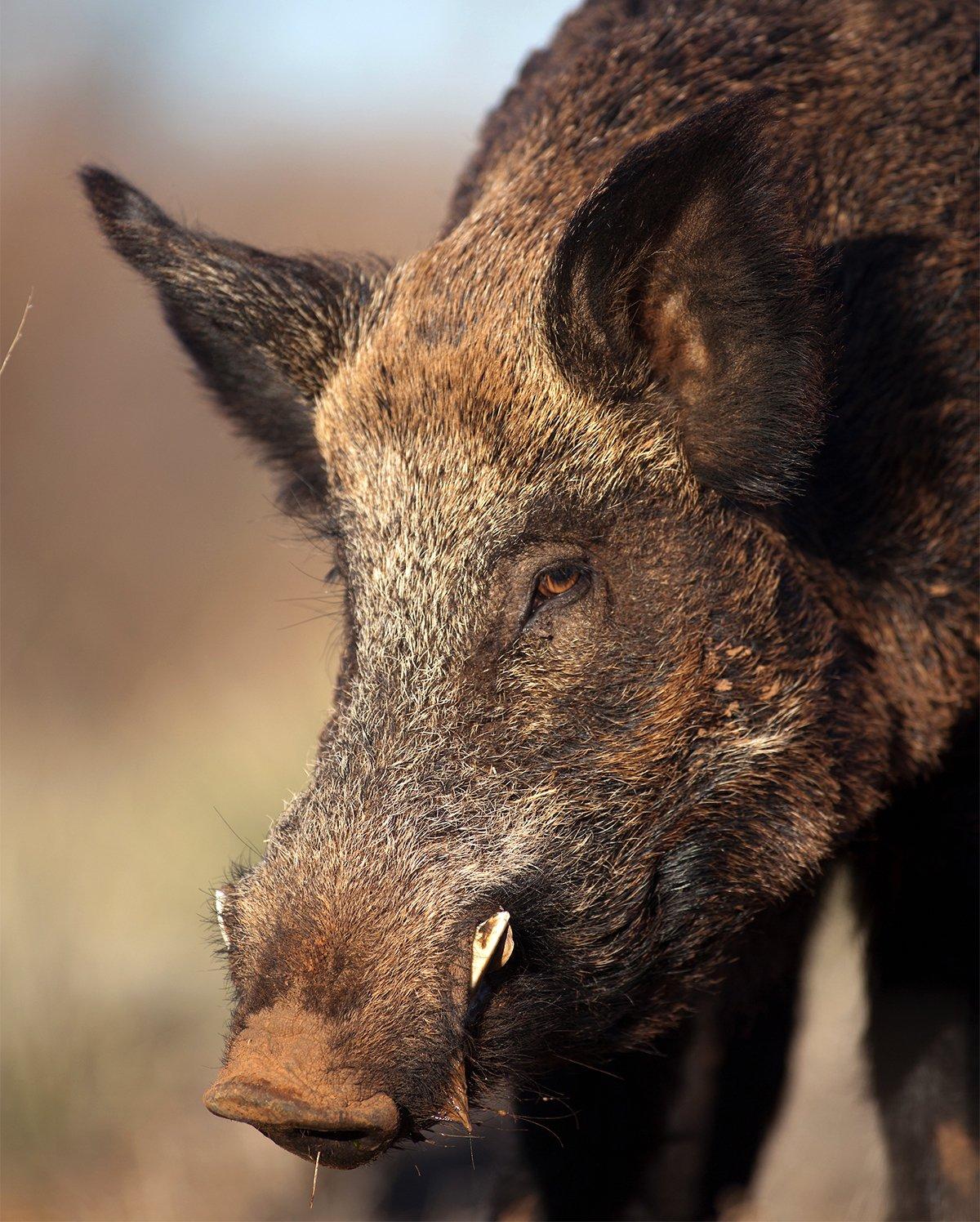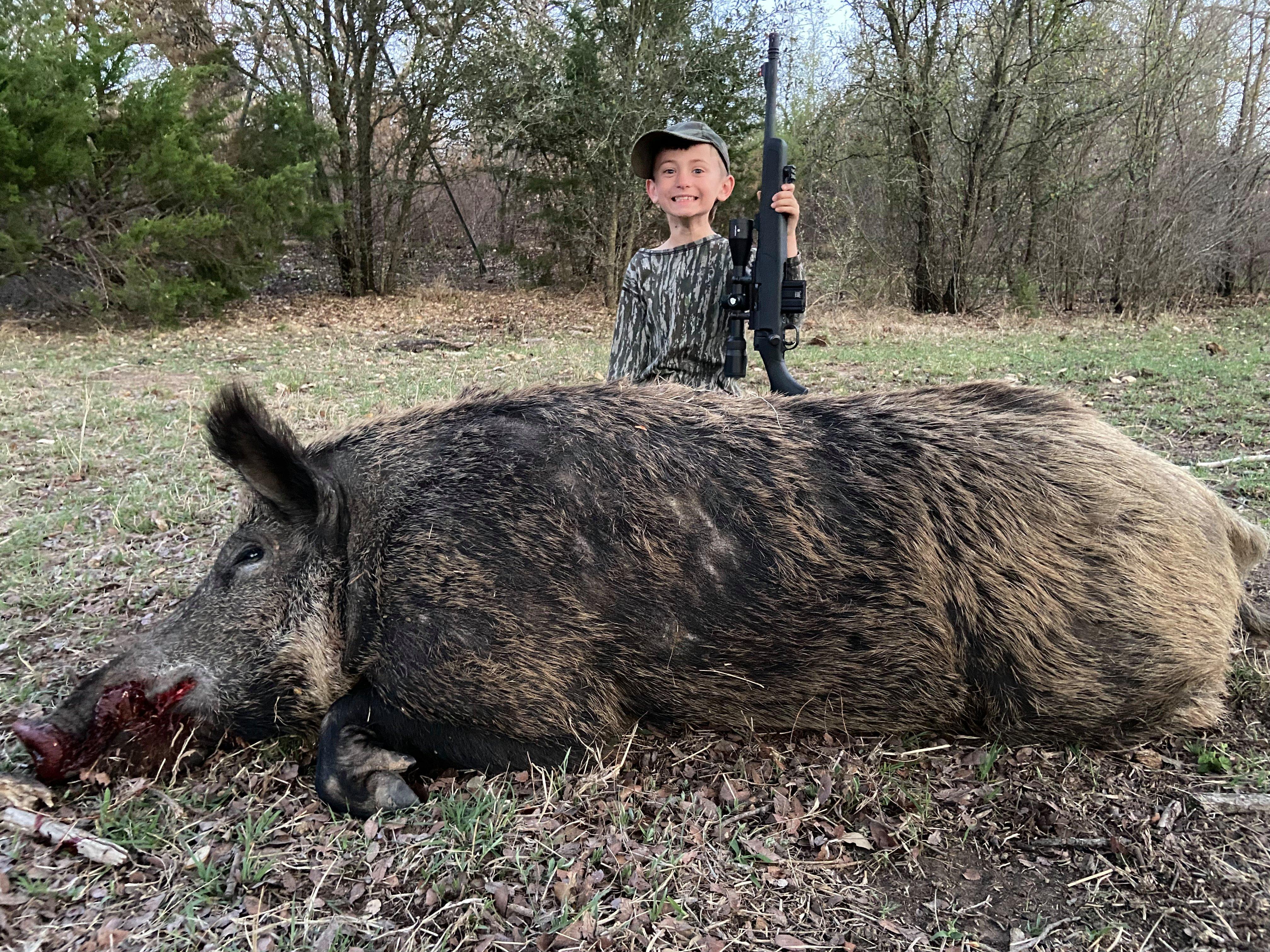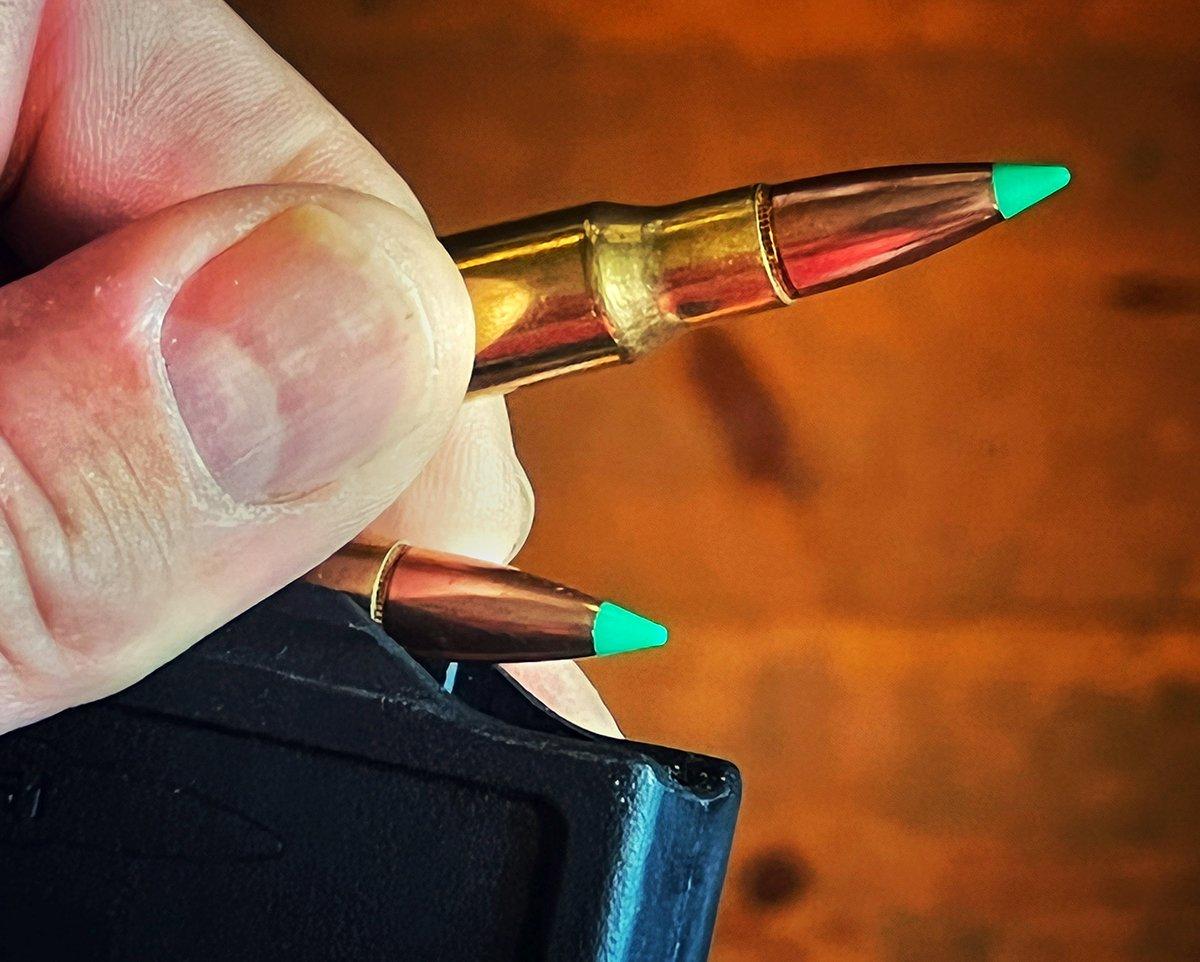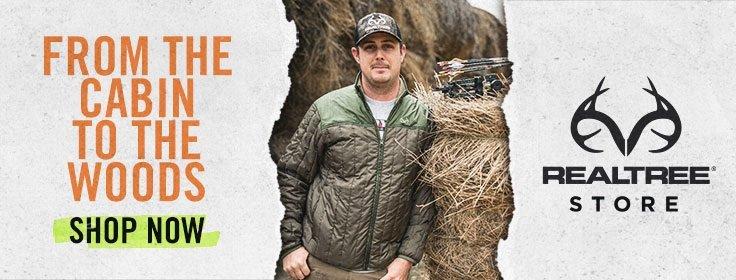Do you need a magnum setup or a fast-shooting semi-auto? Probably, your deer rifle will work just fine
Large wild pigs can move with a grace and silence that's starkly at odds with their appearance. The boar that emerged from the thicket next to us did it without a sound, and he was comically large. My 7-year-old son, Anse, spotted him, and by the time he said something and I looked up, the pig was walking straight away from our box stand, headed to the feeder 60 yards away. Look at the size of the nuts on that thing! Anse whispered.
Indeed, it appeared as if the pig was toting a pair of darkened, medium-sized cantaloupes. As the boar settled on the bait, I helped Anse steady his rifle, a bolt-action .300 Blackout, in the window frame of the box blind.
It was early, maybe 4 p.m., when we snuck into the blind, and the Central Texas sun was still hot. I'd barely closed the bolt on the little rifle when a mix of 25 pigs—sows and shoats—bounced out of the brush, jockeying for position under the feeder. It took a minute for any of them to stand still long enough for a shot, but Anse finally settled his crosshairs and dropped a black, 80-pound sow with a perfect hit through the shoulders. We hustled out of the blind, pulled her away from the feeder and into the shade, and settled back in to hunt out the rest of the evening. The boar emerged several hours later.
Through my binoculars, I could see the tips of tusks protruding from the boar's jaw, and I knew that if wounded, he could be trouble. I had a snub-nosed .38 revolver in my pack, but Anse was the only one with a rifle—and not a real big one at that. When the pig turned broadside, I told the kid to aim just behind the eye and under the ear, and squeeze the trigger. He did, and the boar crumpled in his tracks. Though we were ready for a second shot, it wasn't needed. Deeds, I was shaking on that big old thing, Anse said. Me too, buddy.
I'd have paid a little good money to have had a tractor with a front-end loader handy during the ensuing 30 minutes, when Anse and I were muscling that giant swine onto the hitch hauler behind my truck. But we secured him and the sow with ratchet straps, and afterward Anse raided the cooler, saying it was time for a good, cold juice.
I've hunted hogs for 20 years all over the South and have seen a bunch of them killed with a lot of different tackle, from knives and spears to crossbows and compound bows, handguns, buck shot, slugs, muzzleloaders, and rifles of all sorts, including ARs at night with thermal vision. The gun my kid was using wasn't one many would call ideal for pig hunting - but it worked perfectly nonetheless.
Pig Reality
There's a reason gun nuts love pig hunting. In southern states like Texas and Florida, hogs aren't subject to many game laws, which means you can hunt them with about whatever you please. If you have a magnum rifle that never sees the light of day because, after buying it, you realized cracked clavicles are no fun at all, you can use it on pigs. In fact, some of the advice out there suggests that you need a really big gun for hog hunting, because you never know when a true Hogzilla might make an appearance.
On the other hand, plenty of would-be hog hunters show up with high-capacity semi-autos and visions of a mag dump against a marauding horde of pork. Those rifles are fun to shoot and plenty accurate enough, but unless you're shooting from a helicopter, they rarely give you much of an advantage while pig hunting.
Truth is, most Top 10 Guns for Hog Hunting lists would be pretty boring if we just wrote, bring your deer rifle, but if you're going hog hunting for the first time, that's exactly what you should do. Here's why.
(Don't Miss: You've Got Hogs on Your Place. Now What?)
Shots are Close
From Texas to South Carolina and all of the Deep Southern Heaven in between, most pig hunting is done from treestands, box blinds, or ground blinds overlooking feeders. The action unfolds much like a typical deer hunt, with pigs on the move at first and last light. Most of those stands are set within 100 yards of the feeder, and more often 50 to 75. You don't need a magnum rifle for such close and controlled work. You need good shot placement. I like to hit hogs forward of the shoulder when I'm rifle hunting. A pig's head and neck area is proportionally large compared to its body, making for a good-sized target. A good hit there means no tracking, and shoulders are left intact for barbecue. Lighter calibers, including the .300 BLK and .223, will work. Shoot, on smaller meat hogs at close range, you could get by with a .22.
Spot-and-stalk hunting is common, too, and even those opportunities are rarely long-range pokes. Pigs have poor eyesight, and they're easy to approach with a favorable wind. I've crept to within bow range of them in open fields, and so getting to within 100 yards is rarely that difficult. Again, you don't need a magnum rifle or tricked-out long-range setup for that.
Cover is Closer
Light calibers do have drawbacks. Hogs love thickets, and most shot opportunities happen near heavy cover. A sounder of pigs scatters immediately at the first shot (especially near a feeder), and they are surprisingly quick. The first shot is the one that counts.
You might get off a few follow-ups with an AR-15 before the pigs disappear, but without head shots, you're unlikely to recover many animals—especially if you're using standard calibers like the .223 or .300 BLK. AR-10 platforms in .308 work better (I've used them shooting pigs at night with thermal vision), but those rifles are heavy, expensive, and cumbersome in a stand. They're great shooting rigs, but not my favorite hunting platform.
(Don't Miss: How to Hog Proof Your Feeders)
Hogs are Tough, Sort Of
Hogs are notoriously difficult to recover after a bad shot, partly because of the thick cover mentioned above. But they're also covered in fat that doesn't allow for rapid blood loss, and big boars soak up even more of that with the gristle shield that covers their shoulders. Externally, they're covered in long, wiry hair and dried mud, and that further soaks up blood. Any critter that disappears into a thicket with no sign left behind will be difficult to find. Besides that, a pig's lungs are compact, and situated almost entirely between the shoulders. A hit behind the crease—where many aim at whitetails—is a gut shot on a hog.
Still, when they are hit well, hogs don't seem to have the tenacity for life that a whitetail has, and they rarely run far. Big boars like the one my kid killed are the definite exception on a free-range hog hunt. You're far likelier to shoot at a 30-pound shoat. And even if a big pig does step out, you can kill him if you're careful with your shot placement and loaded with good bullets. Point is, you'll probably kill more pigs with a smaller rifle that you can shoot well than with a big gun that causes you to flinch. It's not new advice, but it is good advice.
The Boring Choice Is …
If you want to consistently kill pigs, precise placement of that first shot—whether you aim at the head or the lungs—is the key. For that, you need a rifle that you can shoot well. My son proved that with a caliber that's a little anemic compared to even the old .30-30. But he can shoot it well because of the minimal recoil, and we are very particular about the shots he takes.
For more experienced shooters looking to bag additional hogs with follow-up shots, you're better gunned with a bolt-action deer rifle in a real caliber than an AR-15 chambered in something marginal. Personally, I've taken more hogs with a .30-06 and .308 than anything else. My personal biggest boar fell to a head shot from a 6.5 Creedmoor, but I do prefer 150- to 180-grain .30-caliber bullets for knocking down hogs on the run. They just work better, especially with cheap soft-point bullets. Lever guns in .30-30, .35 Remington, and .45-70 are all ideal hog getters, too. Whatever the rifle, I like a standard variable power scope for hog hunting (3-9x40 is tough to beat), and I typically keep mine on 5x or 6x while on stand. That allows enough magnification for a precise first shot, but also a wide enough field of view to pick up a moving pig on the follow-up.
The point to all of this is, you don't have to buy a new rifle to go pig hunting because, chances are, you already have a deer gun that will work just fine. But then again, gun nuts love pig hunting for a reason. It's always a good excuse to buy something new and cool and fun.
(Don't Miss: 5 Best States for Pig Hunting)











